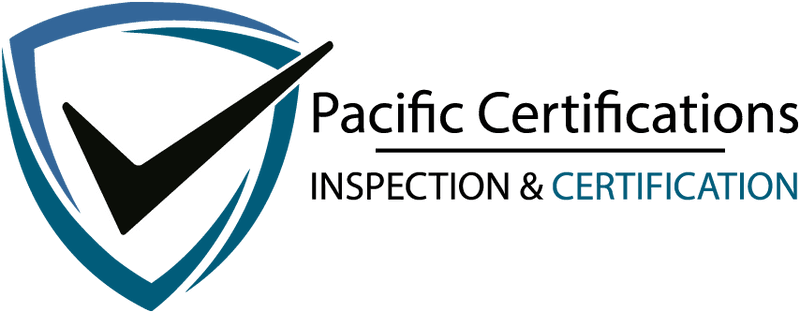
What is EN ISO 20471:2013-High Visibility Clothing?
EN ISO 20471:2013-High Visibility Clothing is an international standard that specifies the test methods and requirements for high-visibility clothing. High-visibility clothing is worn by workers, especially those who work in hazardous environments or conditions where there is a risk of not being seen by others. This type of clothing is typically used to enhance the visibility of the wearer, especially in low-light conditions or in situations where there is a need to draw attention to the wearer for safety reasons.
The standard ISO 20471:2013 outlines the following key aspects:
- Visibility Performance Requirements: It defines the minimum requirements for the color and retroreflection of materials used in high-visibility clothing. This includes requirements for the color of the fabric, the amount of retroreflective material, and the placement of retroreflective bands or stripes.
- Test Methods: The standard provides detailed test methods for measuring the retroreflection, colorfastness, and other performance characteristics of high-visibility materials and garments. These tests ensure that the clothing meets the specified requirements for visibility and durability.
- Classification of High-Visibility Clothing: ISO 20471:2013 classifies high-visibility clothing into three classes, Class 1, Class 2, and Class 3, based on the minimum area and arrangement of the retroreflective and fluorescent materials. The classification helps users select the appropriate level of visibility based on the specific work environment and the level of risk.
- Design Requirements: The standard also provides guidance on the design of high-visibility clothing, including the placement of retroreflective bands and the use of fluorescent materials to maximize visibility.
- Care and Maintenance: It includes recommendations for the care and maintenance of high-visibility clothing to ensure that it continues to provide the intended level of visibility over time.
Overall, ISO 20471:2013 is widely used internationally to ensure the safety of workers in situations where visibility is critical. Compliance with this standard helps to reduce the risk of accidents and injuries in workplaces where workers need to be seen by others, such as construction sites, roadwork zones, and emergency response situations.
What are the requirements for ISO 20471:2013?
EN ISO 20471:2013-High Visibility Clothing specifies several requirements for high-visibility clothing, including performance requirements, test methods, and design criteria.
Here is an overview of the key requirements of the standard:
Performance Requirements:
- Color and Fluorescence: High-visibility clothing must incorporate fluorescent materials that are capable of absorbing and emitting light within the visible spectrum. The color must meet specific requirements for chromaticity coordinates, particularly for the color yellow-green and orange-red.
- Retroreflection: The clothing should incorporate retroreflective materials that return a significant portion of the incident light back to its source. Retroreflective materials must meet specified photometric performance requirements, including minimum levels of retroreflection under various illumination conditions.
- Minimum Areas: ISO 20471 classifies high-visibility clothing into three classes (Class 1, Class 2, and Class 3) based on the minimum required areas of fluorescent and retroreflective materials. The class designation depends on the intended application and the level of risk.
Test Methods:
The standard outlines various test methods to evaluate the performance characteristics of high-visibility clothing materials and garments. Some of the key test methods include:
- Colorfastness: Testing the colorfastness of fluorescent materials to ensure they maintain their color when exposed to environmental factors such as light, washing, and abrasion.
- Retroreflection Testing: Measuring the retroreflection performance of retroreflective materials under specific lighting conditions and angles of illumination.
- Chromaticity Testing: Assessing the color properties of fluorescent materials to ensure they meet the required chromaticity coordinates.
- Visibility Testing: Evaluating the visibility of high-visibility clothing under different lighting conditions and against various backgrounds.
Design Criteria:
ISO 20471 also provides guidance on the design of high-visibility clothing, including:
- Placement of Retroreflective Bands: The standard specifies the placement and arrangement of retroreflective bands or stripes on the garment to maximize visibility.
- Coverage of Fluorescent Materials: It defines the minimum areas on the garment where fluorescent materials must be present to ensure adequate visibility.
- Design of Garments: Guidance on the design of the overall garment, including features such as closures, pockets, and the use of contrasting materials.
Care and Maintenance:
The standard includes recommendations for the care and maintenance of high-visibility clothing to ensure that it continues to provide the intended level of visibility over time. Proper care is essential to maintain the performance of the materials and extend the life of the garment.
It’s important to note that ISO 20471:2013 provides detailed technical specifications and requirements, and compliance with these requirements is critical to ensure that high-visibility clothing effectively enhances the visibility and safety of workers in various occupational settings. Manufacturers and users of high-visibility clothing should refer to the full text of the standard for comprehensive and up-to-date information on these requirements.
What are the benefits of EN ISO 20471:2013-High Visibility Clothing?
EN ISO 20471:2013-High Visibility Clothing specifies the test methods and requirements for high-visibility clothing, offers several benefits for both workers and employers in various industries and work environments. These benefits include:
- Enhanced Worker Safety: The primary benefit of ISO 20471-compliant high-visibility clothing is improved worker safety. It significantly increases the visibility of workers in low-light conditions, inclement weather, and high-traffic areas, reducing the risk of accidents and collisions. This is particularly crucial in sectors such as construction, roadwork, and emergency services, where workers are exposed to potential hazards.
- Reduced Accident Rates: The increased visibility provided by high-visibility clothing helps reduce accidents, near misses, and injuries in workplaces where visibility is critical. This, in turn, can lead to a decrease in workplace accidents and their associated costs, including medical expenses, insurance claims, and lost productivity.
- Compliance with Regulatory Requirements: Many countries and regions have regulations or standards that require workers in specific industries to wear high-visibility clothing. Compliance with ISO 20471 ensures that garments meet internationally recognized safety standards, helping companies adhere to legal requirements and avoid fines or penalties.
- Improved Recognition and Identification: High-visibility clothing helps workers stand out from their surroundings, making it easier for colleagues, equipment operators, and drivers to recognize and identify them. This is essential in situations where multiple workers are present, or where workers are working near moving vehicles or machinery.
- Increased Worker Confidence: Knowing that they are wearing high-quality, compliant high-visibility clothing can boost workers’ confidence in their safety, leading to improved morale and job satisfaction.
- Standardization and Consistency: ISO 20471 establishes standardized requirements and test methods, ensuring consistency and uniformity in the performance and design of high-visibility clothing. This standardization helps both manufacturers and consumers by providing clear guidelines for product development and selection.
- Risk Mitigation: Employers can use ISO 20471-compliant high-visibility clothing as part of their risk mitigation strategies. By reducing the risk of accidents and improving worker visibility, companies can lower their overall risk profile and potential liability.
- Public Safety: High-visibility clothing is not limited to workplace settings. It is also used by emergency responders, law enforcement officers, and individuals who need to be easily seen in public spaces, such as cyclists and pedestrians. ISO 20471-compliant clothing contributes to public safety by making these individuals more visible to drivers and others.
- Long-Term Cost Savings: While there may be initial costs associated with purchasing compliant high-visibility clothing, the long-term savings from reduced accidents, injuries, and related expenses can be substantial. Additionally, durable and well-maintained garments can have a longer service life, providing cost-effectiveness over time.
In summary, ISO 20471-compliant high-visibility clothing plays a critical role in enhancing worker safety, reducing accidents, and promoting compliance with safety regulations. These benefits translate into improved overall safety and well-being for workers and cost savings for employers.
Who needs EN ISO 20471:2013-High Visibility Clothing?
ISO 20471:2013 outlines the test methods and requirements for high-visibility clothing, is primarily relevant to several groups and industries where worker safety and visibility are of utmost importance.
Here are some of the key stakeholders and sectors that need to adhere to ISO 20471:
- Workers in High-Risk Environments: This standard is primarily designed for workers in high-risk or hazardous environments, where there is a significant risk of accidents or incidents due to low visibility. This includes but is not limited to:
- Construction workers
- Road construction and maintenance crews
- Utility workers (e.g., electrical, gas, and telecommunications)
- Emergency responders (e.g., police officers, firefighters, paramedics)
- Airport ground crews
- Railway workers
- Transportation Industry: Workers in the transportation industry, such as truck drivers, bus drivers, and railway personnel, often require high-visibility clothing to ensure they are easily seen by other drivers and workers at transportation hubs.
- Cyclists and Pedestrians: Cyclists, runners, pedestrians, and individuals engaging in outdoor activities in low-light conditions may use high-visibility clothing to enhance their safety on the road.
- Public Safety Personnel: Law enforcement officers, security personnel, and other public safety workers may use high-visibility clothing as part of their uniforms to improve their visibility and safety while on duty.
- Employers and Employers’ Associations: Employers and industry associations in sectors where visibility is crucial for worker safety should be aware of ISO 20471 and may need to ensure that their workers have access to compliant high-visibility clothing. Employers have a responsibility to provide safe working conditions for their employees, and high-visibility clothing can be a critical component of that safety.
- Regulatory Authorities: Regulatory agencies and government bodies responsible for occupational safety and health regulations may refer to or require compliance with ISO 20471 in their safety guidelines or regulations.
- Manufacturers and Distributors: Manufacturers and distributors of high-visibility clothing are directly impacted by ISO 20471 as they must ensure that their products meet the specified requirements and standards to be considered compliant and safe for use.
- Worksite Inspectors and Safety Professionals: Safety inspectors and professionals responsible for evaluating worksite safety may reference ISO 20471 to assess whether workers are provided with appropriate high-visibility clothing as part of their safety measures.
Overall, organizations and individuals should consult relevant local regulations and guidelines in addition to ISO 20471 to ensure full compliance with safety requirements in their specific location and industry.
At last, Pacific Certifications is accredited by ABIS, you need more support with EN ISO 20471:2013-High Visibility Clothing, please contact us at +91-8595603096 or support@pacificcert.com
Read About : BS EN 342:2017-Protective clothing







